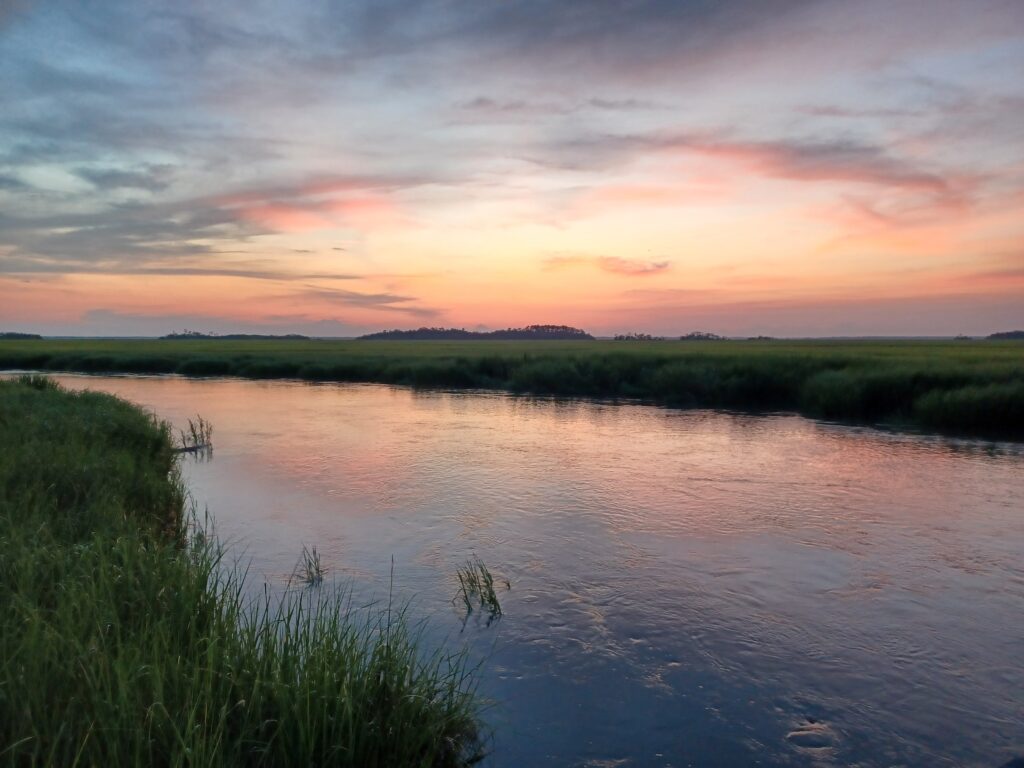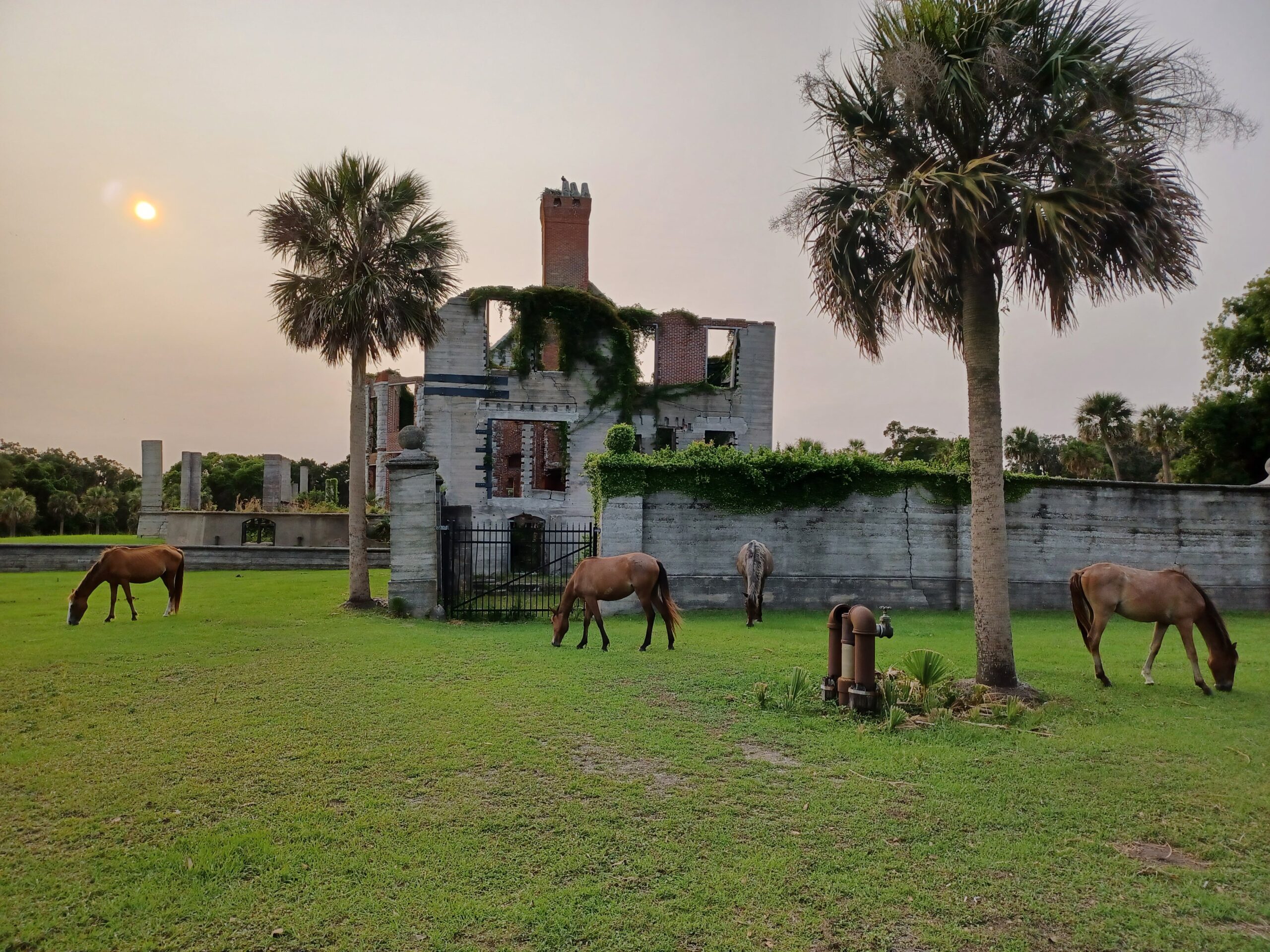
When people think of late spring to summer along the Georgia coast, they might imagine beaches, boating, and a healthy dose of relaxation. But for archaeologists, this time of the year is go time. Field season is in full swing for many working along the coast, which means early mornings, high humidity, persistent bugs, and, of course, a trowel in one hand and bug repellent in the other.
Over the past couple of months, I’ve been island hopping along the Georgia coast, teaming up with colleagues, mentoring students, and visiting archaeological sites on Cumberland, Creighton, and Sapelo Islands. Here’s a snapshot of these adventures:
Cumberland Island: Brickhill and Beyond
My first stop was Cumberland Island, where I had the chance to collaborate with our Society’s consulting archaeologist, Dr. Lindsey Cochran of East Tennessee State University (ETSU), under the purview of the National Park Service.
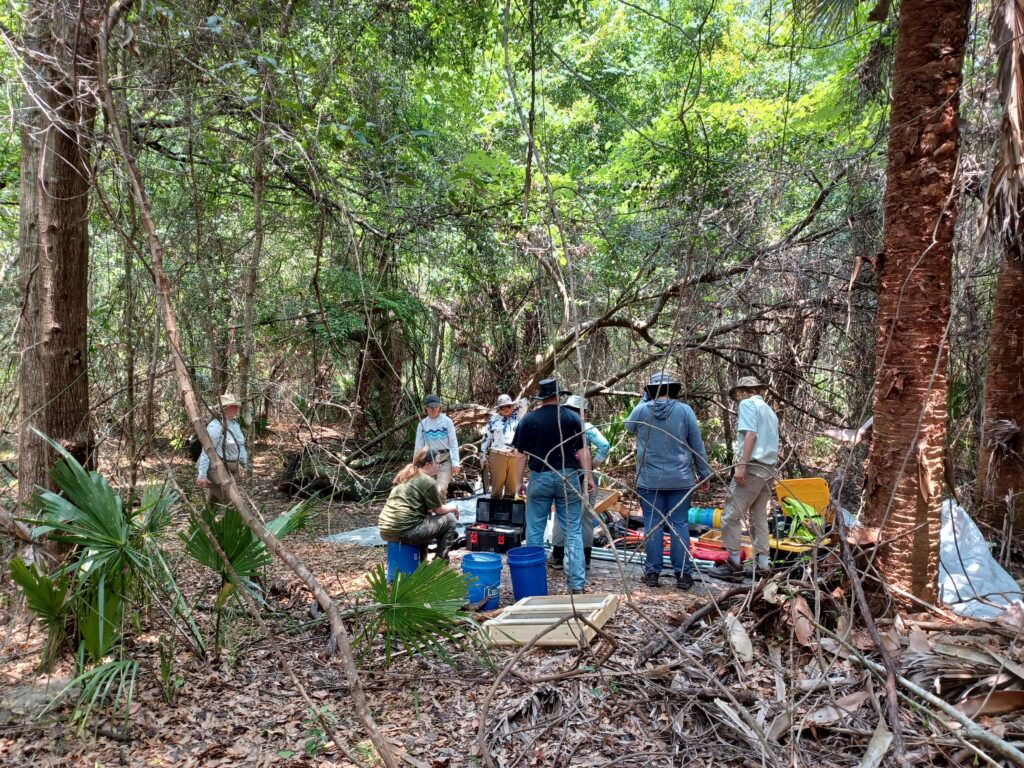
Alongside Dr. Cochran, I assisted in an ETSU field school, which involved teaching ETSU undergraduate students the principles and practices of field archaeology. Our main site was the Brickhill Bluff Freedman’s Village, one of the earliest freedmen settlements on Cumberland Island following the Emancipation Proclamation of 1863.
Beyond Brickhill, Dr. Cochran and I did some site monitoring along Cumberland’s western shoreline, where erosion threatens to erase vital pieces of the past. Although it’s challenging work, it’s incredibly rewarding when students get to experience firsthand how archaeological fieldwork connects to broader historical and environmental issues.
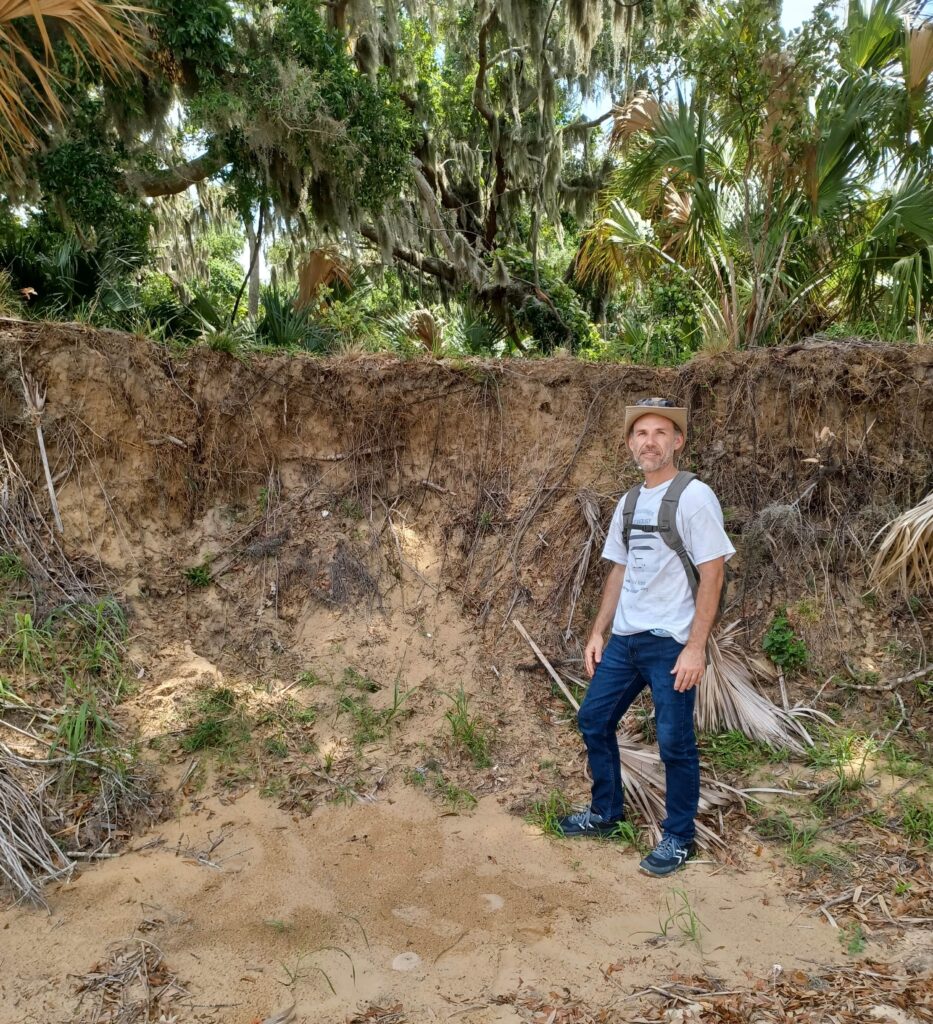
Creighton Island: A Rare Glimpse
Next, I got an invitation to visit Creighton Island, a privately owned back-barrier island north of Darien in McIntosh County. There, Dr. Elliot Blair of the University of Alabama was leading an excavation along with his colleagues, Dr. Rachel Cajigas of the University of Alabama and Dr. Anna Semon of the American Museum of Natural History.
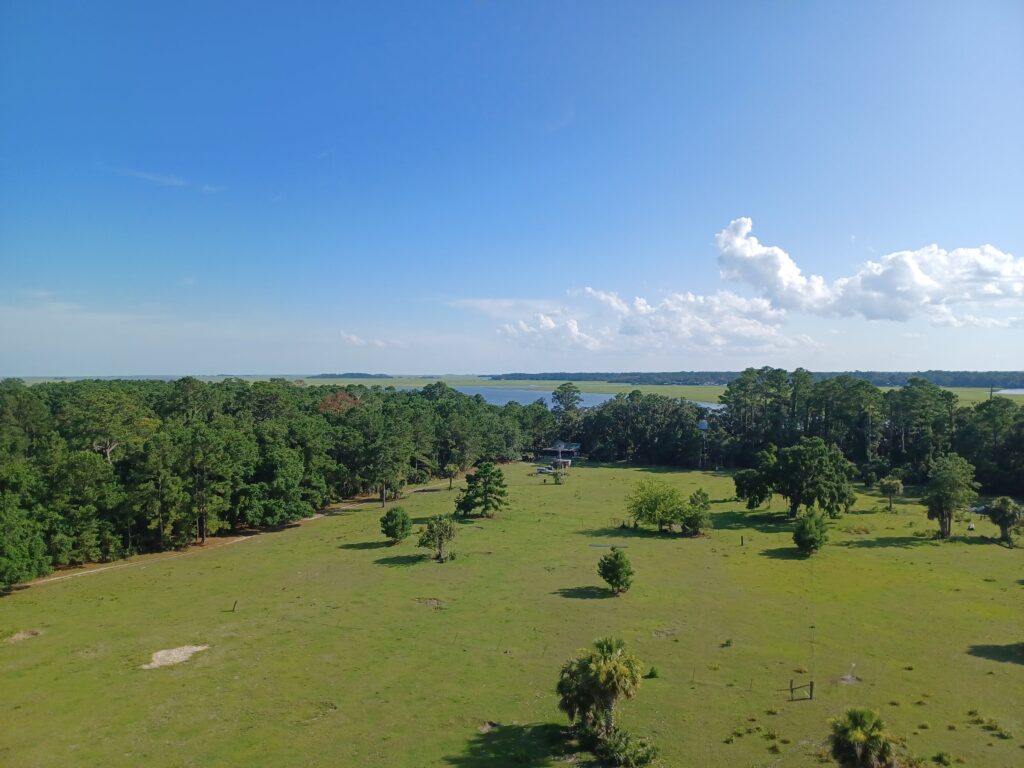
Though only a day-long visit, I was introduced to a range of archaeological sites, spanning from the Late Archaic Period (3000–1000 BCE) through to the 19th century. Their research on Creighton offers a fascinating glimpse into the island’s long and layered history. A big thank you to the Williams family, who not only graciously welcomed Dr. Cochran and I onto their island but treated us to a classic Lowcountry shrimp boil with homemade pecan pie on their porch to conclude the adventurous day.
Sapelo Island: More Work, More History
Finally, I wrapped up my island hopping on Sapelo Island, joining Dr. Brandon Ritchison of the University of Illinois Urbana-Champaign as he finished up his own field school.
After a full day and a half of fieldwork under the summer’s unforgiving sun, Dr. Cochran and I made our rounds to several key archaeological sites, like Chocolate Plantation, the Long Tabby Sugar Mill, Kenan Field, Behavior, Bush Camp, and the Sapelo Shell Ring.
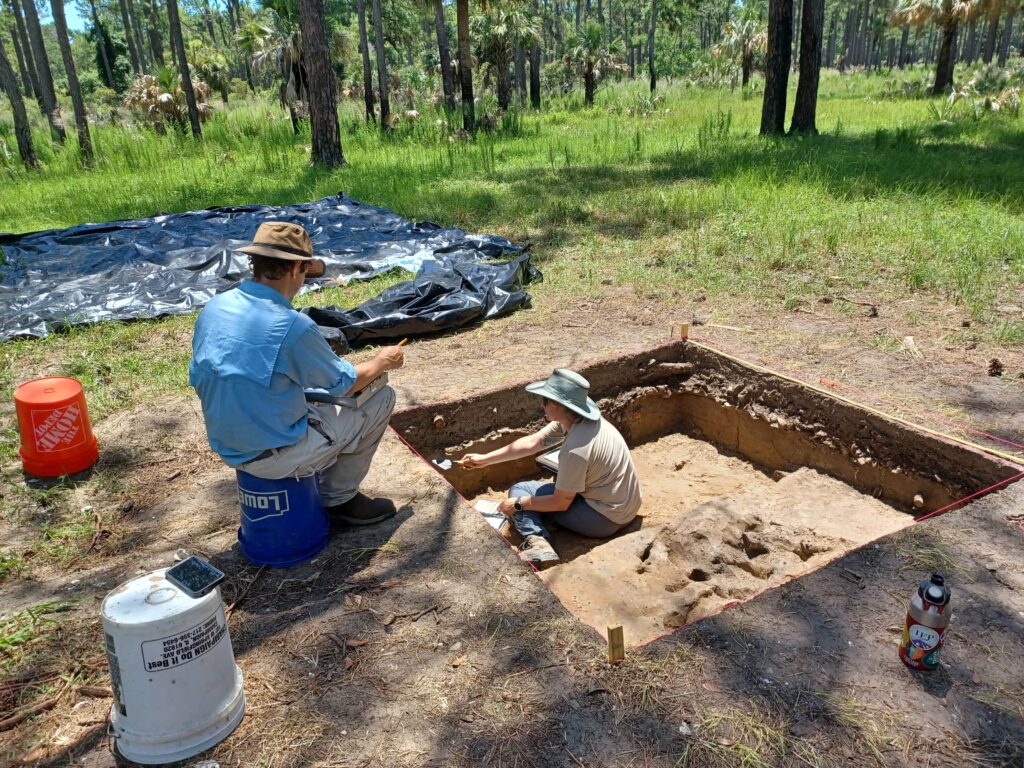
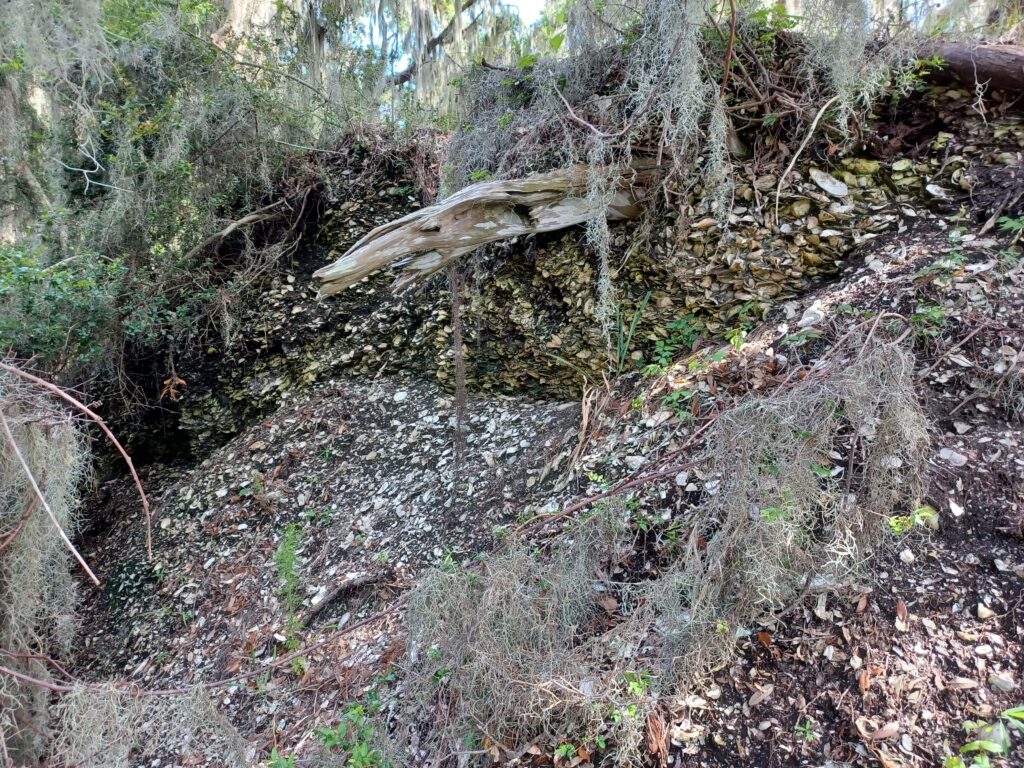
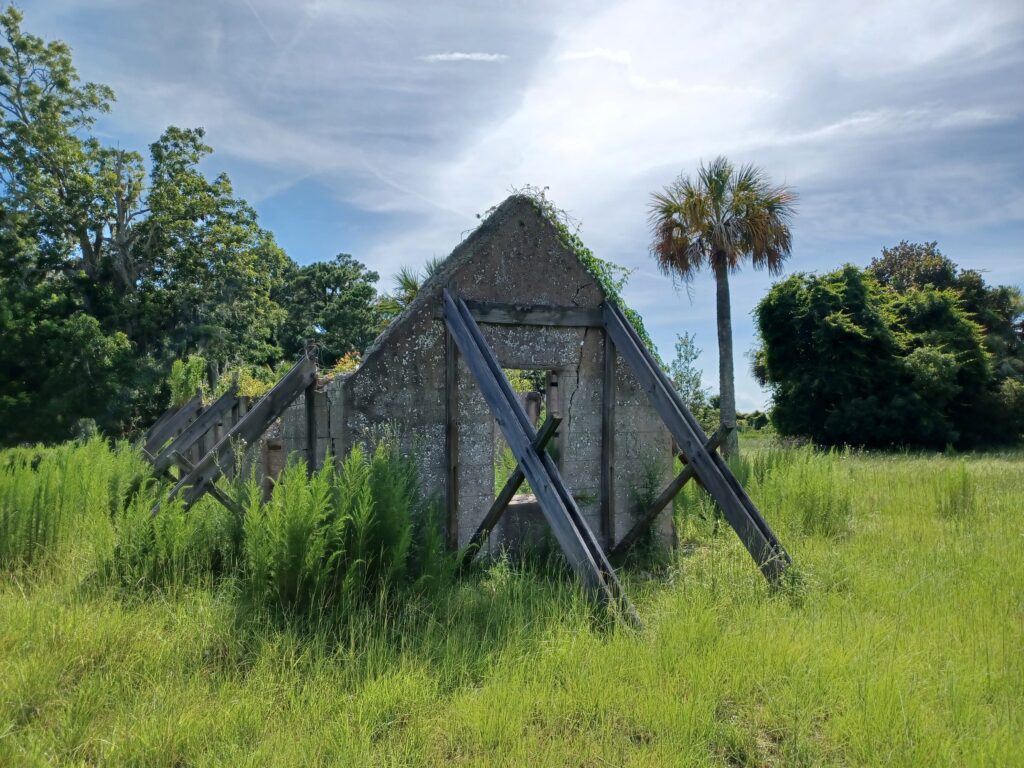
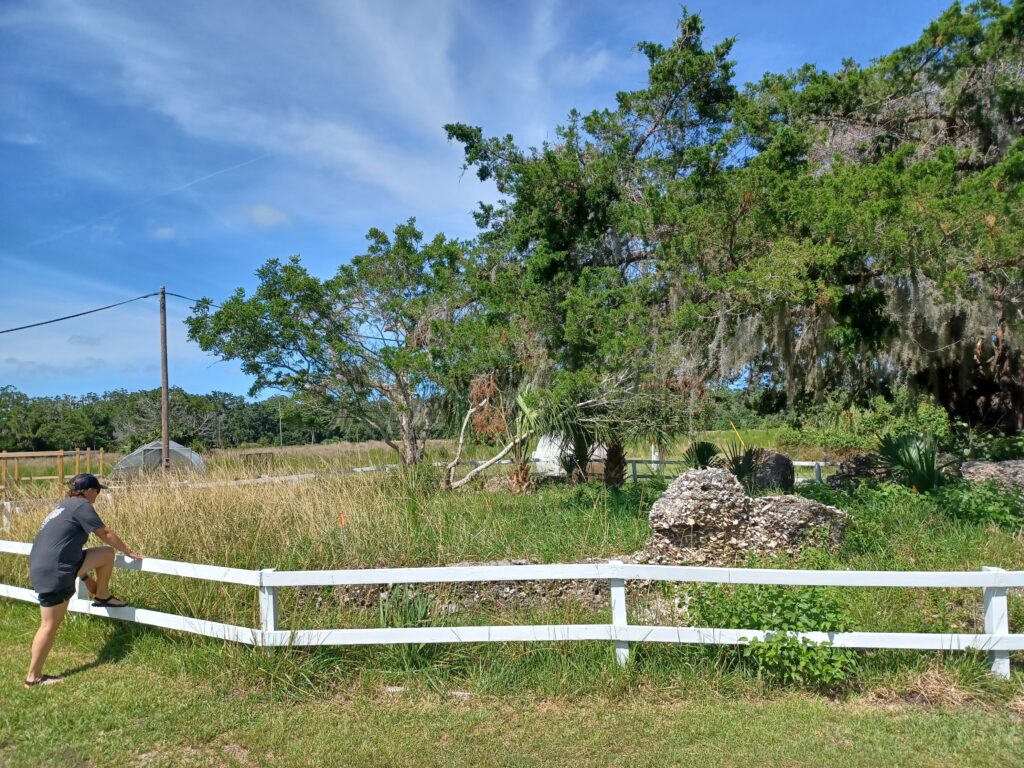
I spent much of the time absorbing the past through visible ruins, and Dr. Cochran and I found ourselves deep in conversation about community collaboration, long-standing research questions, and the evolving role of archaeology. These days, archaeology’s not just about digging up the past with colleagues, but engaging with landowners, sharing findings with the public, and working closely with the communities tied to these landscapes.
Fieldwork Marches On
If there’s one message in this post, it’s this: unless there’s lightning (seriously—safety first!), archaeological fieldwork marches on, no matter the heat, humidity, and bugs. For me, catching boats, surveying shorelines, digging (literally) into the past, asking new questions, rethinking older ones, and collaborating with others is just as enjoyable as chasing the perfect summer beach day.
Until next time!
